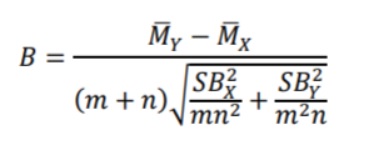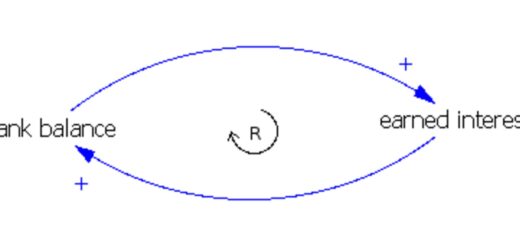Standard Deviation explained with examples
Standard Deviation explained with examples, in statistics, the term standard deviation is widely used to solve the various branches of statistics.
It is usually used to find the differences in the data values from the mean value. In general, the term standard deviation is similar to the variance.
The term standard deviation is the square root of the variance and the units are differed by the square. The standard deviation is more accurate than the term variance.
In this post, we will learn the definition, kinds, and solved examples of the standard deviation.
What is the standard deviation?
In statistics, the standard deviation is widely used to measure the deviation of the given set of data values from their mean. It is generally calculated by taking the square root of the variance.
The standard deviation is divided into two types, one is the sample standard deviation and the other is the population standard deviation.
Both types of standard deviation are frequently used to find the hypothesis testing and probability distribution.
The term population is referred to the whole data observation while the term sample is referred to some from the whole observations. Let us discuss the types of standard deviation briefly.
Types of the standard deviation
There are two basic types of standard deviation.
- Sample standard deviation
- Population standard deviation
Below is a detailed overview of the kinds of standard deviation.
1. Population standard deviation
In statistics, the population standard deviation finds the mean deviation of the whole population data. Generally, the population standard deviation is the square root of the population variance.
To find the population standard deviation, the statistical sum of squares must be divided by the total number of population data values. Such as the number of girls in a city.
The general expression of the population standard deviation is:
σ = √ [∑ (yi – μ)2/N]
Here is an example of this type of SD.
Example
Evaluate the population standard deviation of the given population data.
13, 15, 16, 18, 21, 25, 27, 29, 35, 40
Solution
Step 1: Calculate the population means of the given population data by dividing the sum of data values by the total number of terms.
Mean of population data set = μ = [13 + 15 + 16 + 18 + 21 + 25 + 27 + 29 + 35 + 40] / 10
= μ = 135/9 = 45/3
= μ = 15
Step 2: Find the typical distance of each data value from the mean and square of deviations.
| Data set (xi) | xi – μ | (xi – μ)2 |
| 13 | 13 – 23.9 = -10.9 | (-10.9)2 = 118.81 |
| 15 | 15 – 23.9 = -8.9 | (-8.9)2 = 79.21 |
| 16 | 16 – 23.9 = -7.9 | (-7.9)2 = 62.41 |
| 18 | 18 – 23.9 = -5.9 | (-5.9)2 = 34.81 |
| 21 | 21 – 23.9 = -2.9 | (-2.9)2 = 8.41 |
| 25 | 25 – 23.9 = 1.1 | (1.1)2 = 1.21 |
| 27 | 27 – 23.9 = 3.1 | (3.1)2 = 9.61 |
| 29 | 29 – 23.9 = 5.1 | (5.1)2 = 26.01 |
| 35 | 35 – 23.9 = 11.1 | (11.1)2 = 123.21 |
| 40 | 40 – 23.9 = 16.1 | (16.1)2 = 259.21 |
Step 3: Now find the total of the squared deviations.
∑ (xi – μ)2 = 118.81 + 79.21 + 62.41 + 34.81 + 8.41 + 1.21 + 9.61 + 26.01 + 123.21 + 259.21
∑ (xi – μ)2 = 722.9
Step 4: Now divide the statistical sum of squares by N.
∑ (xi – μ)2 / N = 722.9 / 10
∑ (xi – μ)2 / N = 72.29
Step 5: Take the square root of the above expression to find the population standard deviation.
√ [∑ (xi – μ)2 / N] = √72.29
√ [∑ (xi – μ)2 / N] = 8.502
A standard deviation calculator can be used to avoid such a larger calculations of calculating the SD of the given data.

2. Sample standard deviation
In statistics, the sample standard deviation is the evaluation of the data values from the mean of some sample values from the whole. The measure of some of the values from the whole data set is the sample statistics.
The square root of the sample variance is known as the sample standard deviation. All the calculation of the standard deviation is similar to the variance just a difference is to take the square root of the output of the sample variance.
The general expression of the sample standard deviation is:
s = √ [∑ (xi – x̅)2/N – 1]
Here is an example of this type of SD.
Example
Evaluate the sample SD of the given sample data.
4, 8, 9, 11, 12, 16, 20, 25, 30
Solution
Step 1: Calculate the sample mean of the given sample data by dividing the sum of data values by the total number of terms.
Mean of sample data set = x̅ = [4 + 8 + 9 + 11 + 12 + 16 + 20 + 25 + 29] / 9
= x̅ = 135/9 = 45/3
= x̅ = 15
Step 2: Find the typical distance of each data value from the mean and square of deviations.
| Data set (xi) | x1 – x̅ | (x1 – x̅)2 |
| 4 | 4 – 15 = -11 | (-11)2 = 121 |
| 8 | 8 – 15 = -7 | (-7)2 = 49 |
| 9 | 9 – 15 = -6 | (-6)2 = 36 |
| 11 | 11 – 15 = -4 | (-4)2 = 16 |
| 12 | 12 – 15 = -3 | (-3)2 = 9 |
| 16 | 16 – 15 = 1 | (1)2 = 1 |
| 20 | 20 – 15 = 5 | (5)2 = 25 |
| 25 | 25 – 15 = 10 | (10)2 = 100 |
| 29 | 30 – 15 = 15 | (15)2 = 225 |
Step 3: Add all the squared deviation or find the statistical sum of squares.
∑(xi – x̅)2 = 121 + 49 + 36 + 16 + 9 + 1 + 25 + 100 + 225
∑(xi – x̅)2 = 582
Step 4: Now divide the statistical sum of squares by N – 1.
∑ (xi – x̅)2/N – 1 = 582 / 9 – 1
∑ (xi – x̅)2/N – 1 = 582 / 8
∑ (xi – x̅)2/N – 1 = 72.75
Step 5: Take the square root of the above expression to find the sample SD.
√ [∑ (xi – x̅)2/N – 1] = √72.75
√ [∑ (xi – x̅)2/N – 1] = 8.529
How to Interpret a Standard Deviation of Zero? »
Conclusion
In this post, we have covered all the basics of standard deviation along with its kinds and formulas with solved examples.
Now you can grab all the basics of the standard deviation just by following and learning the above formulas and examples.
Author
Aiden Barnes




